At least for the next few seasons, the NCAA Division I Golf Championships have a consistent home on the North course at La Costa resort in Carlsbad, Calif. In the estimation of John Fields, the head coach of the men’s golf team at the University of Texas, it’s the best spot for the championships and a venue that he hopes will become the event’s permanent host. Why, you ask? For starters, the layout can be stretched more than 7,500 yards, if necessary, and it features a combination of grasses—419 Tifway Bermuda for the fairways and rough, winter grasses in the native areas, and bentgrass on the greens. In other words, the terrain doesn’t give any school an advantage based on the area of the country that it’s based or the types of grasses its players typically practice on.
Fields was also impressed by the way Gil Hanse approached the course’s redesign a couple of years ago, touring the site with about 10 collegiate coaches and asking for their opinions and their feedback. “He listened to the coaches,” Fields says, “and he factored in that the NCAA championships were going to be match play. He also built the course with men and women in mind.”
The North course at La Costa may be the best neutral site for the championships, but some colleges still have the advantage when it comes to their own home courses. Here, I spotlight a dozen of the best collegiate courses in the country—you can call this my “Big 12” of college golf.
Yale Golf Course (Yale University)—New Haven, Conn.
For years, northeast golfers in the know—and who had Yale connections—gladly made pilgrimages to southern Connecticut to tee it up on the college’s course, a Golden Age layout conceptualized by Seth Raynor and C.B. Macdonald. More recently, the school lifted the course’s semi-private designation, making it even more accessible, though the course has been shuttered for the last year or two (and will continue to be at least through the rest of this year) as Gil Hanse and Jim Wagner oversee a comprehensive restoration of those 6,825 yards. Described by some as a “sleeping giant,” the course will soon take the northeast golfing world by storm—there are few modern architects more trustworthy for such an important restoration than Hanse and Wagner. “Every original feature brings to light the sheer creativity and genius of these architects (Raynor and Macdonald),” Peter Palacios, the course’s general manager, proudly declares. “The bunkers are deep and penal. The fairways are generous, but they don’t provide many level areas. And the greens are bold, move from every angle, and were meticulously created to keep the player thinking until the end of the round.”

Taconic Golf Club (Williams College)—Williamston, Mass.
Consistently ranked among the top public golf courses in Massachusetts, Taconic is a masterclass in Golden Age golf course architecture. Originally the handiwork of Wayne Stiles and John Van Kleek, the par-71 parkland layout, which trundles through and around mature woodlands in the shadow of the nearby Mount Greylock and the Taconic Mountains, has hosted a trio of notable national amateur championships (the 1956 U.S. Junior Amateur, 1963 U.S. Women’s Amateur, and 1996 U.S. Senior Amateur). It also bore witness to one of the Golden Bear’s many holes in one, this accomplishment coming on the 14th hole, a relatively flat, 163-yard hole made challenging by its slightly raised green surrounded by deceptively penal bunkers. (Nicklaus recorded the ace during a practice round for the 1956 U.S. Junior.) More recently, the course enjoyed a thorough restoration by Hanse and Wagner in 2009, during which several trees were removed to reestablish the original architects’ intended shot values and strategies. Stiles’s dramatic bunker complexes were also restored, including one that he had intended to build but never did due to boulder complications in the 1920s.
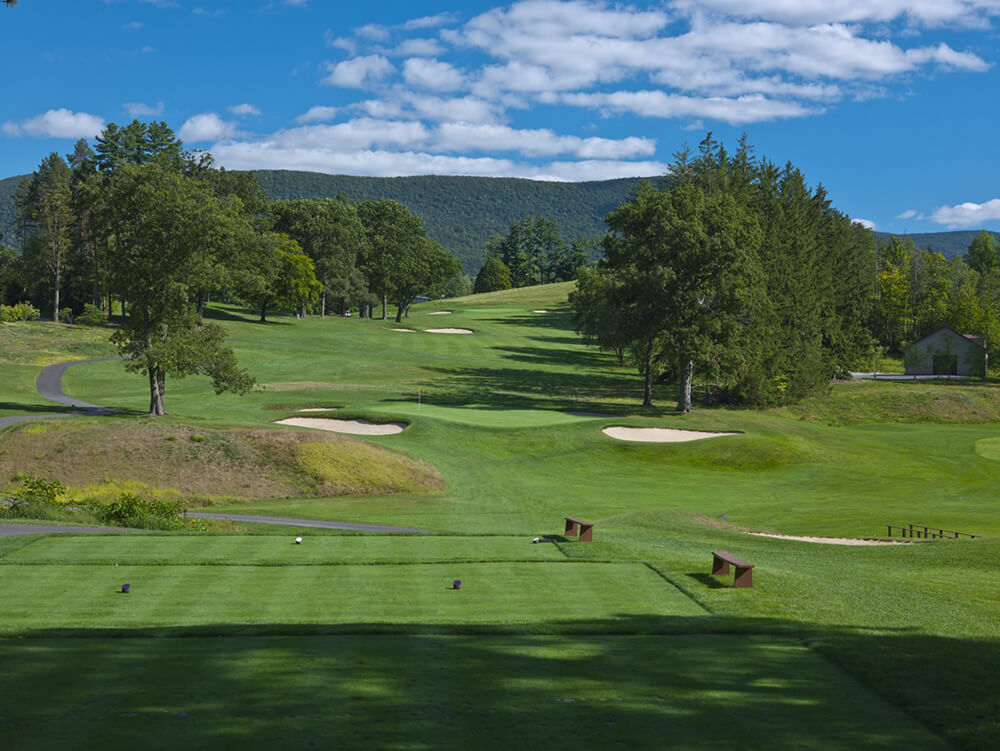
The Rawls Course (Texas Tech University)—Lubbock, Texas
When Tom Doak arrived in northwest Texas during the early 2000s to build The Rawls Course at Texas Tech, he was introduced to a rectangular plot of reclaimed cotton fields—a parcel of land that was sorely lacking in many redeeming natural qualities, at least as far as golf course design is concerned. It was around this time that Doak’s latest completed project, Pacific Dunes, was garnering a lot of attention, which meant the university had on its hands a golf course architect who was about to become a hot commodity. To account for the site’s flatness, Doak and his team moved 1.3 million cubic yards of topsoil, massaging the landscape into terrain that soon resembled the topography that can be found east and south of Lubbock, where the great plain dips into valleys and canyons. With treacherous bunkers and boldly contoured, complex green sites, the course can challenge highly skilled players, but its wide fairways make the course more approachable for average golfers—that width also mitigates the healthy winds that so often define the region’s weather.

Jimmie Austin Golf Club (University of Oklahoma)—Norman, Okla.
As a powerhouse in the Big 12 Conference, the University of Oklahoma boasts strong athletic programs with noteworthy home field and home court advantages. The golf team boasts a home field advantage of its own, as the school’s best players routinely practice at Jimmie Austin Golf Club. More specifically, they have access to a 7,452-yard gem that was originally designed by Perry Maxwell and more recently renovated by OU alum Tripp Davis, who played on the Sooners’ national championship golf team in 1989. The course’s terrain is shaped and influenced by both Bishop Creek and the South Canadian River and across its rolling hills, players will regularly encounter penal swaths of native grasses and stately Bur oaks. Thanks to a new set of championship tee boxes that Davis introduced in 2017, OU’s top golfers will be thoroughly tested, as the slope and course ratings of 142 and 77.9, respectively, suggest.

Eisenhower Golf Club (United States Air Force Academy)—Air Force Academy, Colo.
Home to two 18-hole courses, the U.S. Air Force Academy’s Eisenhower Golf Club is most famous for its Blue course, a Robert Trent Jones Sr. creation that opened for play in 1959. Capable of stretching to almost 7,500 yards, the course is welcoming off the tee with wide fairways, which is why some players will consider the course a cakewalk; that is, until they reach the greens. It’s there on the putting surfaces that RTJ Sr.’s only Colorado golf course bites back. When the U.S. Girls’ Junior National Championship was contested at Eisenhower in 2023, the Blue became the first military golf course to host a USGA national championship. (Insider tip: If you’re planning a round at the golf club, take a page out of the military’s book and be punctual. Arriving early is key, since the course is located on a military base, which means you’ll need to first pass through an armed guard station.)
Warren Golf Course (University of Notre Dame)—Notre Dame, Ind.
Steve Stricker may be a loyal Fighting Illini, but he also has a soft spot for the Fighting Irish given that he won his first USGA championship at the U.S. Senior Open on Notre Dame’s Warren Golf Course in 2019. Routed across 250 wooded acres, the course came to life 20 years earlier thanks to the efforts of Bill Coore and Ben Crenshaw, who adhered to their “move as little earth as possible” mantra but still created a captivating and challenging routing across an otherwise flat piece of property. They were able to accomplish that through the strategic placement of hazard, hole shapes, and the key locations of individual trees. Dotted with red fescue, heather, and other native grasses, the course feels decidedly natural, which is partly why it received its Audubon Cooperative Sanctuary certification.
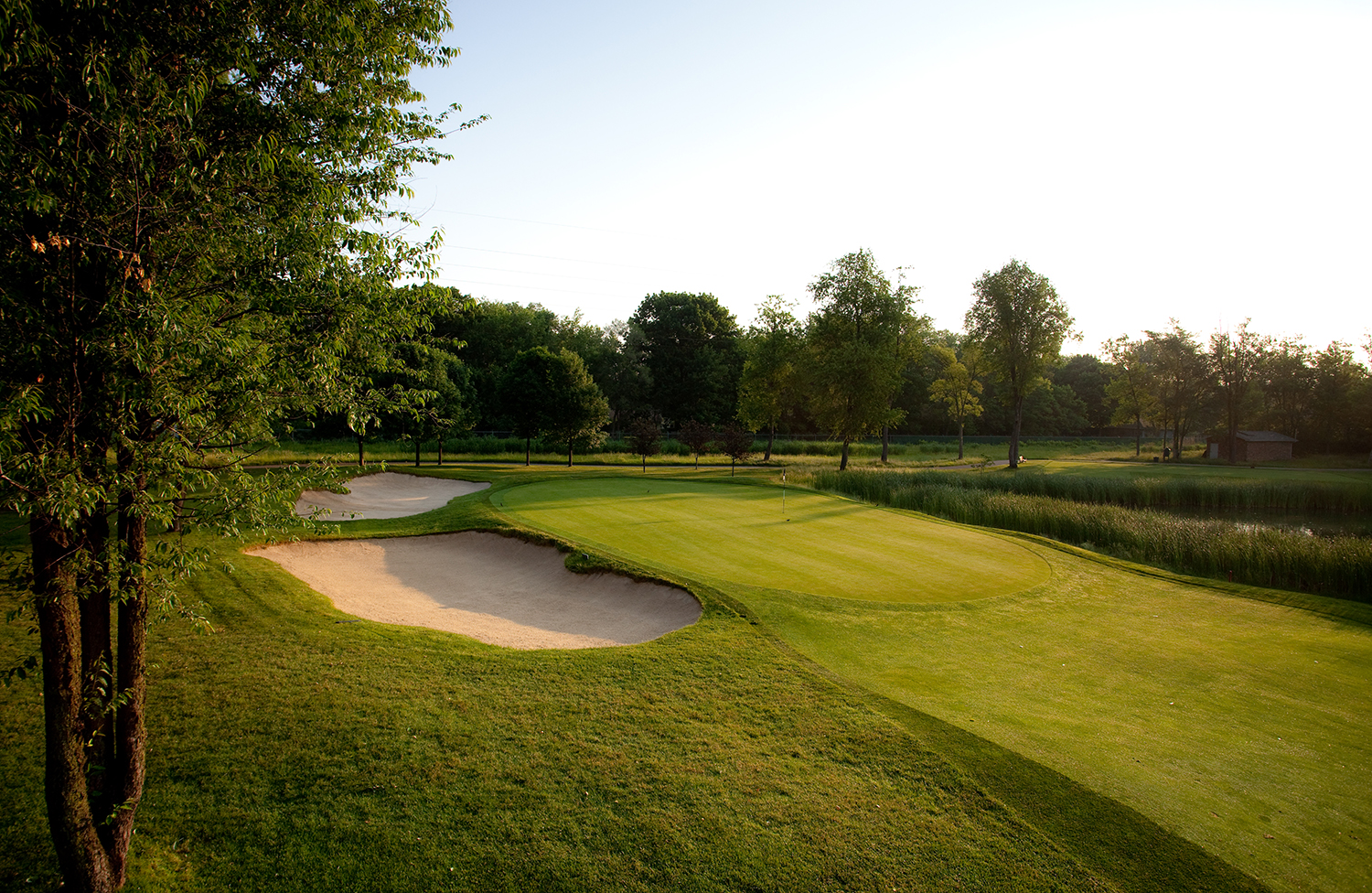
University of Michigan Golf Course (University of Michigan)—Ann Arbor, Mich.
When it opened in the spring of 1931, the Blue—as the University of Michigan’s golf course is casually referred—was one of the country’s few college courses. Sitting adjacent to the “Big House” (the Wolverines’ football stadium), this Alister MacKenzie design is as captivating for its golf architecture as it is the views that it offers—perched on top of a bluff, the course delivers panoramic views out over the rest of the campus. At 6,684 yards, the course isn’t long (certainly not by today’s standards), but it challenges thanks to undulating fairways, boldly contoured greens, and plush rough. In 1994, Michigan alum Arthur Hills completed a multi-million-dollar renovation of the course, one that restored MacKenzie’s original bunkers and green complexes, not to mention created new tee boxes, repositioned trees, and implemented a new irrigation system. When not utilized for its main purpose, this golf course also plays home to the university’s cross country team—races begin on the fairway of the first hole and traverse almost every playing corridor at some point along the 5,000-meter and 8,000-meter events.
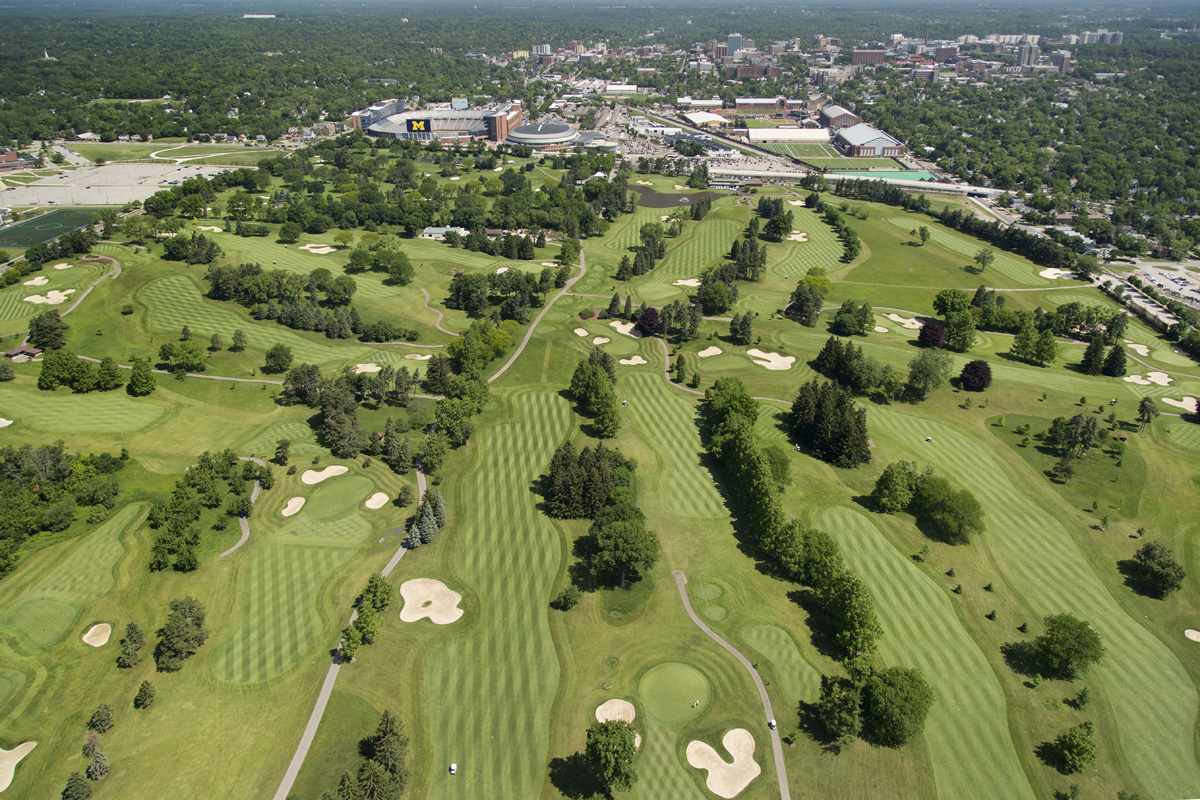
The Ohio State University Golf Club (Ohio State University)—Columbus, Ohio
Depending on who you talk to, the Scarlet Course at The Ohio State University Golf Club could be the handiwork of several different architects. Shortly after designing Augusta National and Cypress Point, Alister MacKenzie put pen to paper to conceptualize the collegiate course; however, the revered architect passed before construction began. Perry Maxwell stepped in to oversee the course’s construction without taking credit for its design; yet, in 2005, Buckeye alum Jack Nicklaus visited the property to restore its bunkers and add the length necessary to challenge today’s best college players. Speaking of those bunkers, they’re widely regarded as being some of the most penal in college golf and the putting surfaces, which are firm and fast, make it difficult to knock it close to some hole locations. Not surprisingly, the course plays as one of the toughest venues on the Korn Ferry Tour every September.
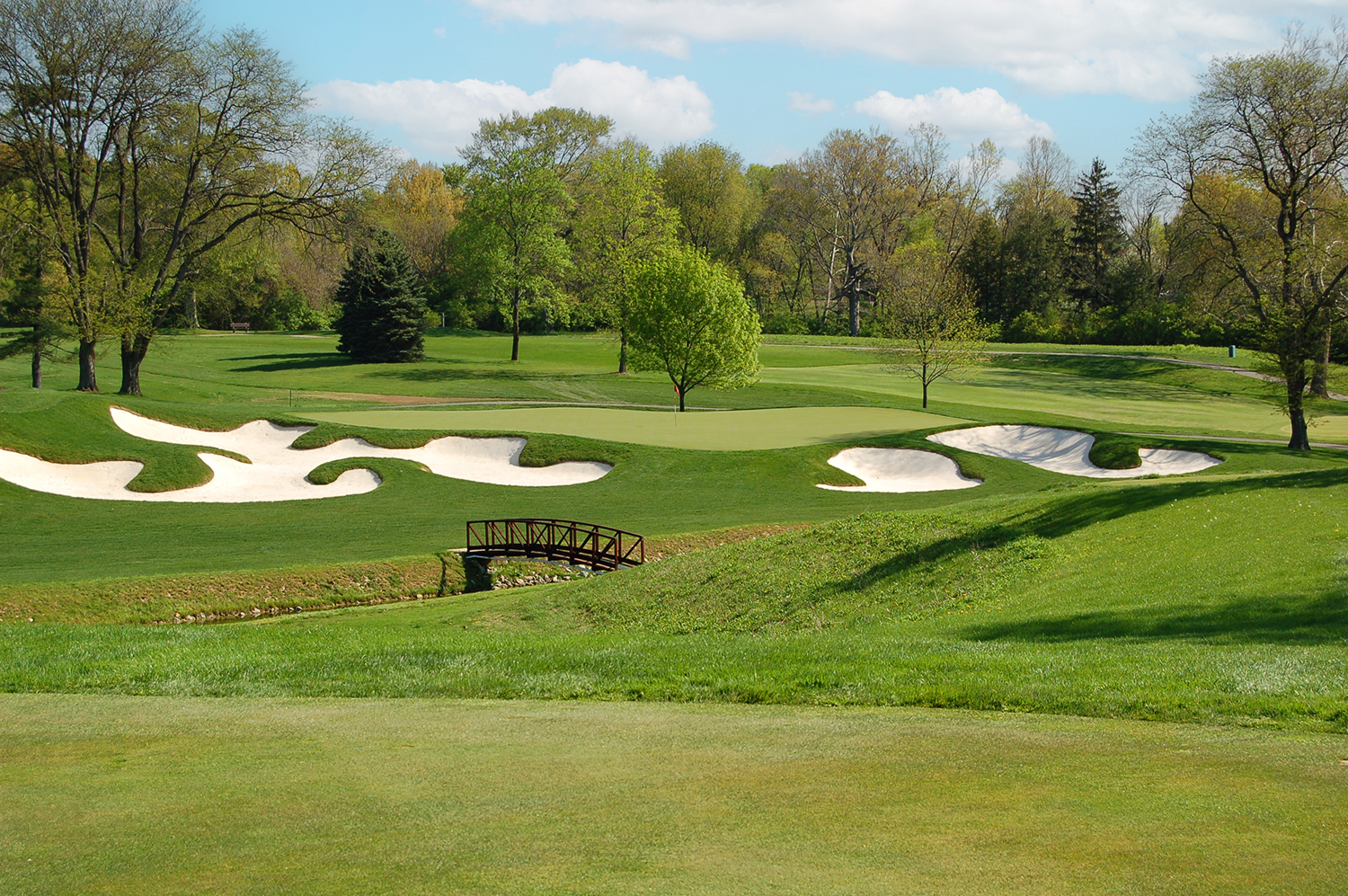
Stanford Golf Course (Stanford University)—Stanford, Calif.
When it comes to golf and Stanford, the Bay Area university will forever be known first for its most famous alum, Tiger Woods, though it’s worth noting that Tom Watson, Sandy Tatum, and Notah Begay III, among others, also played on the Cardinal’s men’s golf team. The university’s 6,742-yard golf course, a George Thomas and Billy Bell Jr. design from the early 1930s, on the other hand, gets far less attention. Sporting fairways lined by grand oak trees and a number of elevated tee boxes, the course provides a mix of narrow chutes and open corridors and is defined most by significant elevation changes. For that reason, the par-70 course plays longer than its yardage, which is reflected in its 73.7 course rating from the tips. “It’s a complete golf course,” Watson, a 1972 graduate, once said. “It is both beautiful and difficult and requires you to master every shot.”
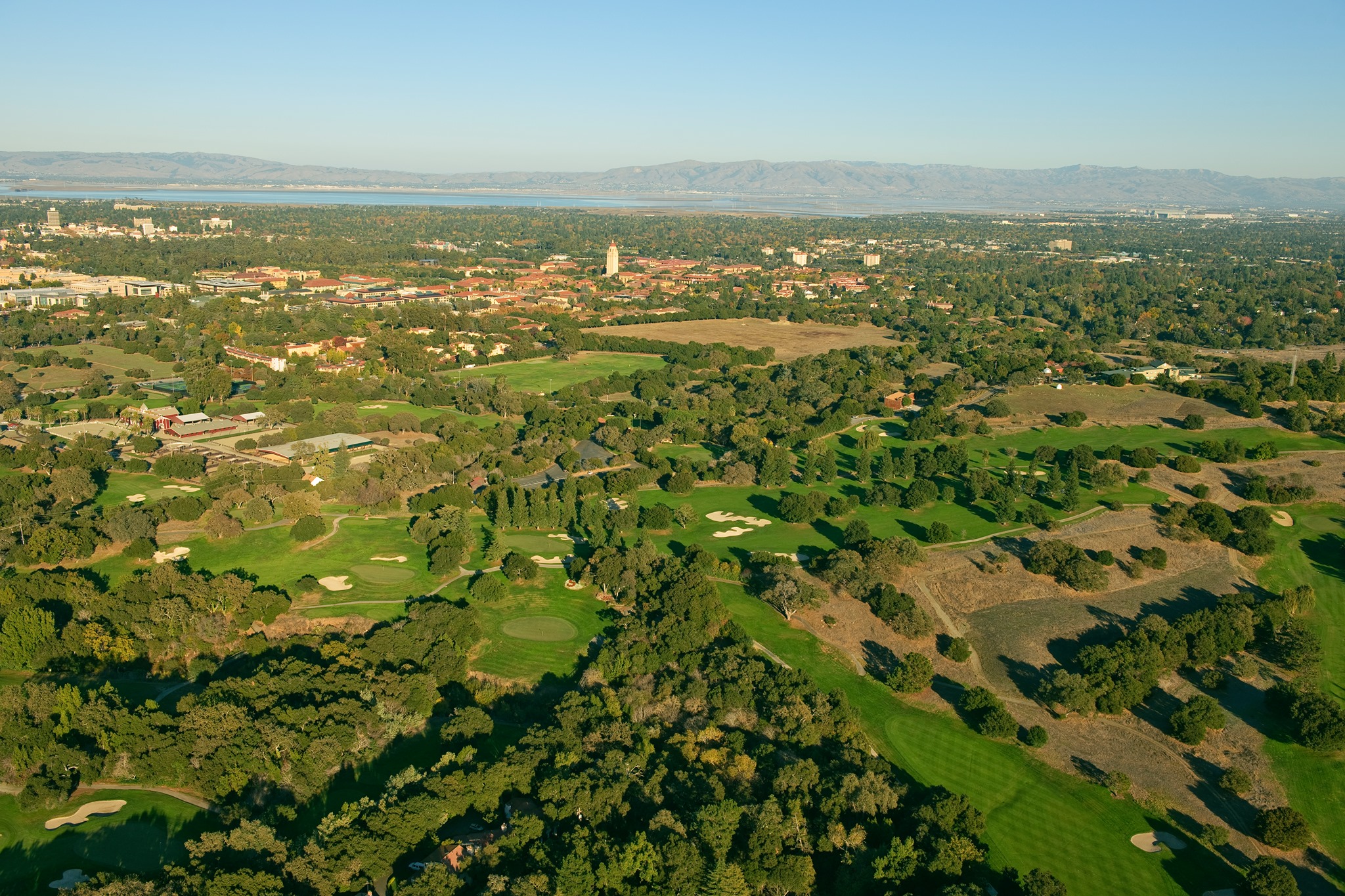
University Ridge (University of Wisconsin)—Madison, Wis.
Like many of Wisconsin’s most celebrated golf courses, University Ridge, a Robert Trent Jones Jr. design (circa 1991) that plays home to the University of Wisconsin, benefits from a natural landscape that was formed from a glacial recession millennia ago. The course’s namesake ridge serves as a backbone that separates the land into a series of rolling hills and valleys. The two nines begin by traversing disparate terrains. The front is wide open, meandering through a preserve prairie and marshland; whereas the first six holes of the back weave their way through dense woodlands. If the course has a signature hole, it’s the par-five 16th, which features three standalone sections of fairway and a dozen bunkers. Although the Badgers’ golf team has only five NCAA tournament appearances in its history, its home course is the real deal—proven by the fact that for eight straight seasons it hosted the PGA Tour Champions’ American Family Insurance Championship.

U.S. Naval Academy Golf Course (United States Naval Academy)—Annapolis, Md.
With a portfolio of work that includes Shinnecock Hills, Merion, and The Country Club, William Flynn was a Golden Age golf architect who many believe doesn’t get enough attention. The same could be said for the U.S. Naval Academy Golf Course, a Flynn design, which opened for play in 1938. Located across the Severn River from the Naval Academy in Annapolis, Md., the course recently benefited from an Andrew Green-led renovation, one that included a redesign of all the bunkers to better reflect Flynn’s original style, as well as the widening of fairways and the enlarging of greens to support more hole locations and more captivating playing angles. The end result is a course that Flynn would be proud of. It accomplishes the main goal that the late architect used as primary focus on any new course project: “to hold interest of the player from the first tee to the last green.”
Palouse Ridge Golf Club (Washington State University)—Pullman, Wash.
Institutions of higher education should, first and foremost, foster creativity and critical thinking. At Washington State University, the college’s golf course, Palouse Ridge, does that admirably. Loads of elevation change comes packaged with a handful of blind shots, notably cantered fairways, and aggressively sloped hills around the greens that allow creative golfers—and those with some course knowledge—to use the ground to get close to many hole locations. The 7,302-yard layout is the handiwork of the late John Harbottle III, who, back in 2008, used the grounds of an existing 9-hole course (and some additional land that the golf club acquired) to route these memorable holes. The total project cost $12 million, but anyone who has played Palouse Ridge will tell you it was money well spent.

What other collegiate golf courses would you add to this list?




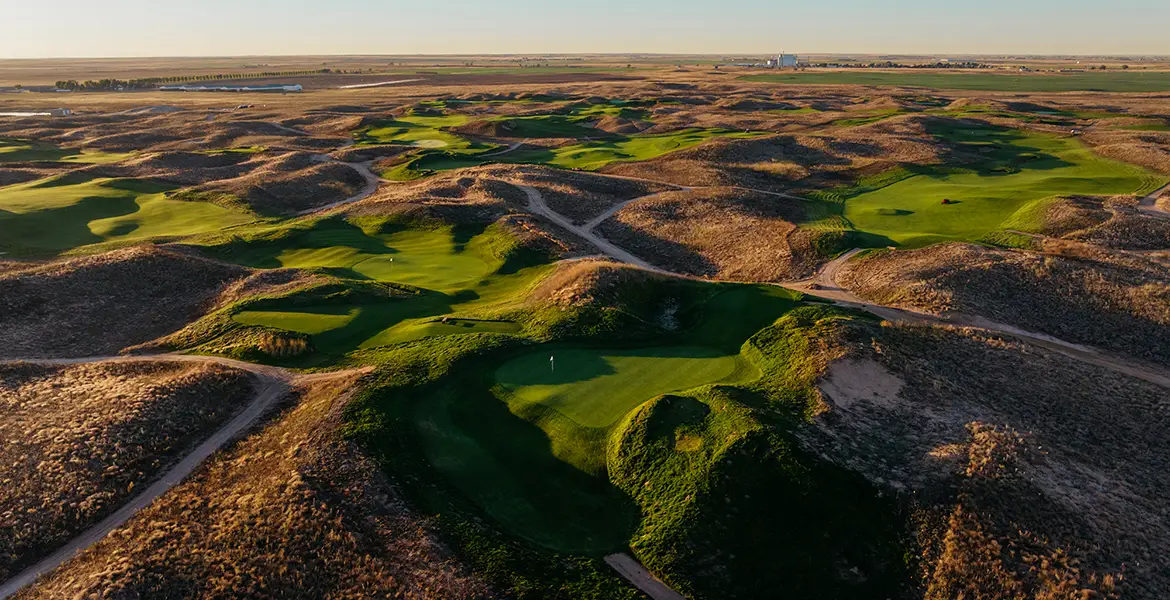
Not sure how the Pete Dye River Course at Virginia Tech doesn’t make your top 12 when Golf Digest has it #6 on their college ranking. With a number of holes that parallel the New River it really is an outstanding course and a very challenging course.
Is it true that the Virginia Tech course has only one bunker and that’s in the practice area because the course was built to be an agronomist study? I played there maybe 20 years ago.
No
Ault & Clark built course in 1999. In 2005 Dye redid course as donor felt invitation into ACC meant it needed better (ie-tougher course). The Dye course has a ton of bunkers with quite a few pot bunkers. The course is ranked 6th in Golf Magazine top 25. I feel this is way too high (I’ve played 9 of top 25 but also another 5-10 college courses that could be on list)
Excellent course.
Big omission to leave out the Pfau course at Indiana University, Bloomington.
Purdue’s 2 courses aren’t slouches, either. But, yes, since the 2019 renovation, Pfau should be much higher.
Knocked out 36 in one day at PU. Real nice golf.
Pfau is brand new course, not a renovation. Took years as the property was a forest and they took out 10s of thousands of trees. Steve Smyers isn’t an unknown architect but doesn’t get the props for his work!
Great layout, especially after the re-modeling.
Karsten Creek in Stillwater, OK (Oklahoma State University) is typically high on these lists.
Not considered a college course because students at the college do not have access to it. It is a private club with access only for the golf teams.
Loved it but its not cheap!
Surprised Lonnie Pool from NC State didn’t make the list. It’s a great layout and is the only Arnold Palmer signature course in college golf.
UNC and Duke also have excellent courses right in that area.
furman university in Greenville,sc and university of South Florida course both are fabulous tracks
USF Claw Golf Course closed in 2023
UVA’s Birdwood in Charlottesville is an outstanding golf experience. Major renovation by Davis Love years ago. Features zoysia fairways and a short course too.
Nice layout and fun to play.
Pete Dye designed Kampen Course at Purdue University
And the Pete Dye Ackerman-Allen Course at Purdue, one of Pete’s last works…..
United States Military Academy in West Point, NY has a beautiful and excellent golf course amid Bear Mountain
RTJ Sr built by some pows back in the day.
Looks like Mr Tolson has an aversion towards golf in the south east US. Questionable credibility with this ranking.
You should play them if hou are going to rank them.
Florida State’s Seminole Legacy is outstanding. Indiana’s Pfau course easily makes this list.
RTJ’s early design at Colgate University, Seven Oaks Golf Club is a fabulous golf course that hosted the 1977 NCAA Men’s Championship (won by Scott Simpson with an over-par score).
He also did the course at Cornell.
I lost a golf ball or three there over my four years!
I would add the University of Louisville Golf Club in Simpsonville, KY and the Colgate University Seven Oaks Golf Club in Hamilton, NY
I’ve seen Pete Dye’s two courses at Purdue listed as high as #3 in the nation, and they don’t even make this list? Preposterous…..
And don’t forget Trysting Tree in Corvallis, Oregon, home of the Oregon State University Beavers. It’s a solid links-style track
Typo: the Naval Academy course is across the “Severn” River, not the “Seven” River…
Yale is the best one I have played.
I would add UNLVs home course – Southern Highlands.
A college team may play there, but Southern Highlands is not a college course.
Walker course at Clemson is great. The absolute worse is the LSU golf course. A sad excuse for a university with such great athletic facilities and teams.
Walker Course is A great track Don Garrison does such a great job Supering that place. It’s probably not on the list because it’s under 7000 yds and Clemson doesn’t play there due to that.
But those last 3 holes up against Lake Harrell with that iconic Tiger Paw Par 3 17th might be one of the most picturesque in the region.
Wake Forest University’s home course is the Old Town Club which is rated in Golf Magazine’s top 100 courses in the U. S. It would seem it should be rated in the top 12 College Home courses.
Seven Oaks at Colgate University in Hamilton, NY is a great track that hosted a NCAA championship back in the late 1970’s. Great routing through a complex stream system challenges accuracy with yardages and course management.
This writer has lost all credibility.
I played many of these great courses. I am not sure why Indiana university and West Point courses were not included.
Colbert Hills in Manhattan Kansas is not only a great college course, but also used by the Agronomy Department at Kansas State